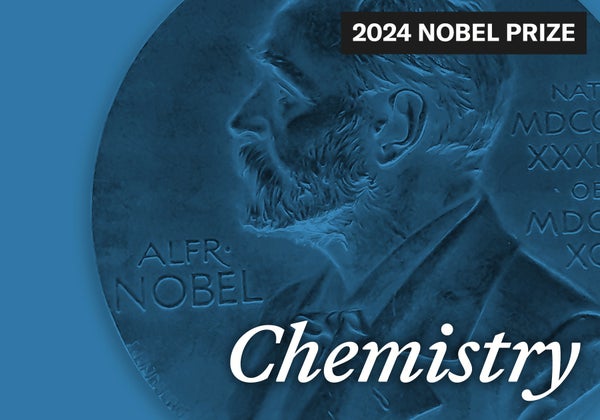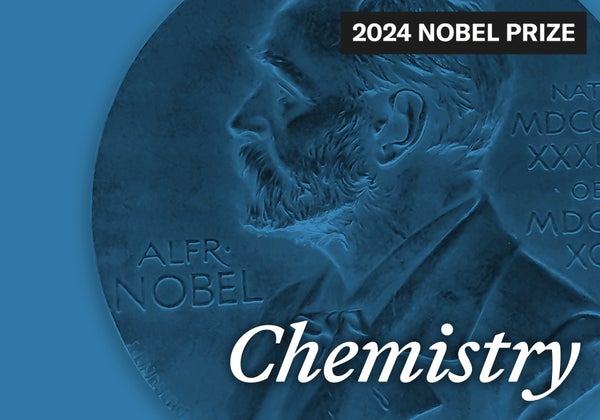October 9, 2024
2 min read
2024 Chemistry Nobel Awarded for Cracking the Secret Code of Proteins
Three scientists won the Nobel Prize in Chemistry for discovering how to predict the shape of proteins, crucial to understanding their function, and for creating entirely novel proteins that can clean the environment, block viruses, and more

vanbeets/Getty Images (medal)
The 2024 Nobel Prize in Chemistry was awarded Wednesday to three scientists for discovering how proteins—the building blocks of life and the dynamos that let cells function—do their jobs. Proteins build muscles and brains, help hearts beat on time, and filter out poisons, among many other essential tasks.
Half of the Nobel went jointly to researchers Demis Hassabis and John Jumper, both of Google DeepMind in London, for developing an AI program—AlphaFold2—that can predict a protein molecule’s shape and structure from its chemical building blocks, called amino acids. Since a protein’s shape determines its function, these predictions are incredibly important.
The other half of the prize went to structural biologist David Baker of the University of Washington, for figuring out ways to design entirely new proteins—molecules never seen in nature. Some of these artificial proteins can serve as miniscule sensors, while others may block the coronavirus that causes COVID. Baker will get 50 percent of the prize money, 11 million Swedish kronor, or nearly $1 million. Hassabis and Jumper will get the other 50 percent.
On supporting science journalism
If you’re enjoying this article, consider supporting our award-winning journalism by subscribing. By purchasing a subscription you are helping to ensure the future of impactful stories about the discoveries and ideas shaping our world today.
Since proteins are such basic workhorses in biology, the ability to design artificial ones is “absolutely mind blowing,” said Johan Aqvist, a member of the Nobel committee for chemistry, at a press conference following the announcement. Baker, awakened by a phone call from Sweden, said he “was very excited and very honored” to get the prize, and that he “stood on the shoulders of giants,” including Christian Anfinsen, a U.S. scientist who received the 1972 chemistry Nobel after discovering that the shape of proteins was almost entirely determined by their sequence of amino acids. (Baker also said that when he told his wife it was the Nobel Prize committee on the other end of the line, she yelled so loudly with excitement that he missed some of the details about who had won what.)
Among the artificial proteins that Baker is most excited about, he says, are molecules that block the way the coronavirus, SARS-CoV-2, infects human cells. He and his team were able to engineer these proteins at such a small size, he told Scientific American in a 2021 article, that they could be delivered in a nasal spray rather than with the traditional shot in the arm. Making these “mini binders,” as he and his team call them, would have been impossible before he and other scientists deduced some of the fundamental rules that pull certain amino acids together and push others apart, determining the shape of the protein and thus how it interacts with other molecules, such as components of a virus.
In 2020, as Baker stood alongside a stage at a scientific meeting, waiting to speak on a panel about protein design that I was moderating, he told me that he much prefers working in the lab on new molecules rather than giving public speeches. With all the advantages of Nobel recognition, however, come demands on a winner’s time. And Baker’s time in the lab will probably be limited during the next several months, at least until after the December awards ceremony in Stockholm.

